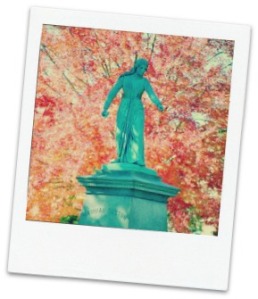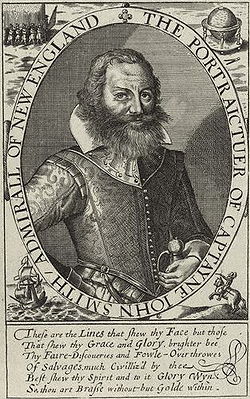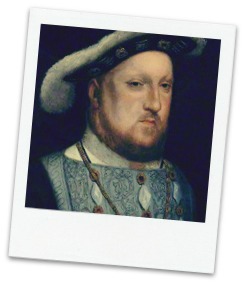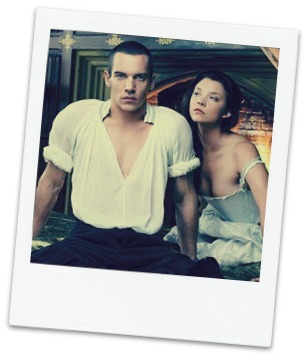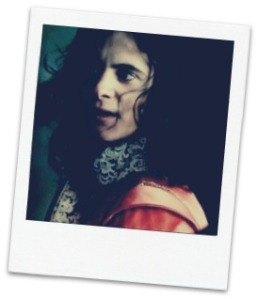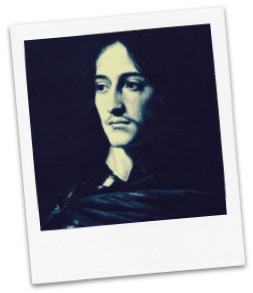With Channel 4’s The New Worlds upon our screens, and a recent peak in views upon posts relating to seventeenth-century America (take that Henry VIII!), I have decided to share with you this week the tale of a colonial witch. I first met Hugh whilst researching my undergraduate dissertation upon male victims of witchcraft accusation. His story of all the witches I studied struck me deepest. It is a perfect storm of tragedy; a movement to the New World, rash behaviour, marital breakdown, infant mortality and the terrible consequences of this potent mix.
Hugh Parsons, in the decades preceding his accusation and trial, held a fairly good position. Living in a frontier town on the edge of Native American lands, Hugh’s occupation as a sawyer saw him in high demand. Unfortunately though Hugh was a hard-headed businessman and used fire-and-brimstone rhetoric as standard in his wheeling-and-dealings. He would have been perfect for The Apprentice but his behaviour was disastrous in seventeenth-century Massachusetts; the pursuit of personal profit far, far from puritan ideology. In 1638 he rashly fell into a quarrel with the town’s new Reverend – George Moxon – over the price of building work on the Rev.’s new dwelling. In openly threatening the spiritual leader of the town for personal profit Hugh opened a void between himself and the good citizens of Springfield that would slowly be filled and widened over the years with distrust, fear and accusation.
The plethora of evidence that would be utilised against him in 1651 was already rapidly compiling. It was said that Rebecca Moxon fell into fits after the aforementioned dispute. A black reputation began to follow Hugh around like a dark storm brewing above the horizon of the frontier town. Nine years later, and again after a dispute over bricks, Blanche Bedortha fell into fits, was troubled by strange lights, excruciating pains and a long and painful labour. She asserted that Hugh had cursed her. ‘Gammer’ she claimed he said ‘I shall remember you when you little think upon it.’ These were the sorts of angry exchanges that were loaded with menacing power in the dark brooding of hindsight. Bad blood rained down between the Bedorthas and Parsons and flowed into courtroom accusation. By now married Hugh’s wife, perhaps in a counter-measure to protect her husband, accused Blanche’s lying-in-maid of the witchcraft instead. Mary Parsons was charged with defamation and her husband made to pay £3 in reparations.
It appears that some point after this the Parsons’ marriage began to fail as they lost children and were forced to share their house with another couple. By the late 1640s Hugh, and by implication his wife, was becoming increasingly isolated. Sources from the trial talk of him – like an unpopular kid at high school – being made to sit by himself whilst the other working men took lunch. Their tittering and whisperings were though much more threatening than canteen chatter. Rumours had started to abound of the Parsons’ powers. These rumours were only worsened by the Parsons prolific loss of children. Infant mortality was a regular occurrence, but the Parsons lost all their children in short-succession.
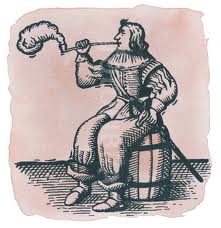
A c17th smoker. Pipe tobacco was hated by the puritan authorities, who seeing it as aligned with the sin of idleness banned smoking upon the streets. Hugh would have had to gone into a neighbours house to smoke, as he did after hearing of Samuel’s death, Yet, such behaviour would not have helped his reputation.
Mary Parsons’ triggered a trial when she vocally accused her husband of bewitching ‘her’ children to death, in front of already suspicious neighbours who joined in the chorus. It was said that upon hearing of the death of their last child Samuel, Hugh had ‘rushed in a light manner’ to a neighbour’s smoking a whole pipe before returning to his grief-stricken wife. This blasé attitude was compounded into demonism by Mary who quickly claimed that Hugh had also told her to abandon Samuel to death alone. It was harvest time and Hugh she said far preferred profit to parenthood.
Hugh had begun to sleep outside of the marital bed in these months. In the claustrophobic community of Springfield, this decision to sleep outdoors was troubling. It provided ballast to the collective imagination. The great outdoors was aligned with declension and excess in the puritan mind; it was easy imagine those nights out of doors were spent covenanting with the Devil. The truth of what Hugh was actually doing during those nights is bitingly sad. Reading this segment of Hugh’s testimony at his trial nearly bought me to tears (though it being third year I was of course already hyper-emotional).
In his defense at trial Hugh stated that far from telling Mary to leave their dying babe but tostay indoors with the bairn and nurse it. He would bring in the harvest, which was at least a two person job, alone. He did admit during the months of Samuel’s last illness he had chosen to spend nights out of doors. But he said he was not covenanting with the Devil, spirits, Indian women or the other puritan boogey-men but weeping in privacy. He and Mary had by this point lost two children and he must have been very much aware that his reputation was being dangerously damaged beyond repair. He justified his nights in the wilderness by claiming he wished not to add to Mary’s pain by grieving her heart further with displays of his own sorrow.
Contrary to our modern prejudices towards the ‘unfeeling’ early moderns, Hugh’s lack of public display of grief was considered far enough outside of the social norms to evidence having made a pact with the Devil. Rumour soon became undisputed truth. Hugh Parsons had made a pact with the Devil and the depositions for his maleficia (harmful magic) were flavoured by his love of personal gain.
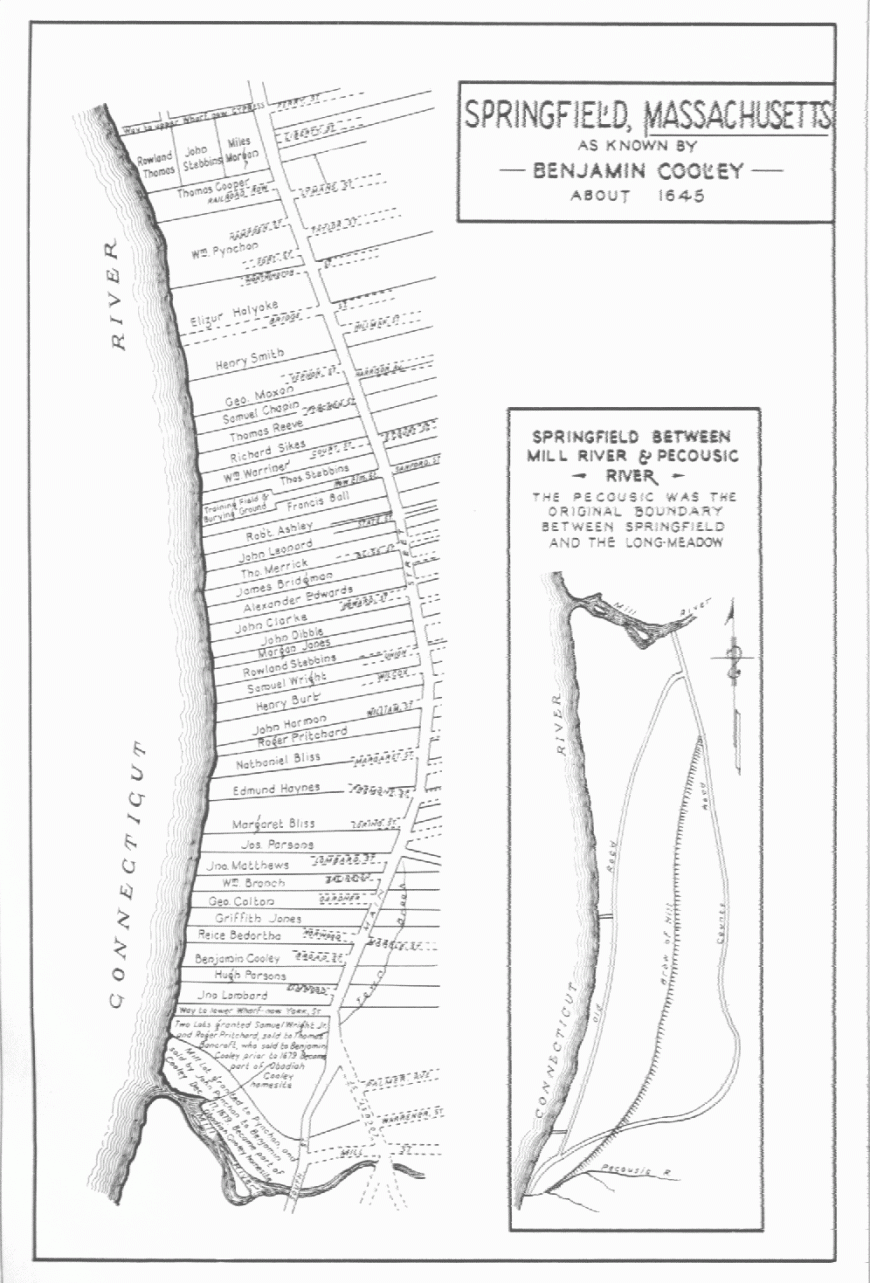
Layout of early Springfield, MA. Note Hugh Parsons’ land right at the frontier of the town, heading toward ‘Indian country’.
He was a victim of his own brand of masculinity, a masculinity which arguably would have made him quite successful in the profit-centric Southern colony of Virginia. By the time of Hugh’s trial in 1651 nearly every household in Springfield witnessed against him. After Sarah Edwards’ refused to sell him milk it was said the cow stopped producing. He magically stole meat from boiling hot pots, stopped beer taps and diabolically hid knives and trowels to make the men of Springfield ‘blush.’ Worst of all poor Hugh had the bad luck of turning up whenever such maleficia (or just the men of Springfield being hair-brained) was detected, usually to ask a favour or remind a neighbour of a debt. In 1652 Hugh Parsons was found guilty of witchcraft at trial in Boston. Though he was let out on a technicality, his wife died awaiting execution for infanticide. Her accusations against Hugh backfired dramatically.
Hugh had been verbally combative all his life and acquisitive to the point that men laughed he sat on a higher stump at lunch just to see what other men had, but it is hard not to feel sorry for the man. He had felt the rising tide of rumour and hatred towards him over thirteen years, had lost his children and experienced his marriage break-down and his own wife turn to accuse him of the deadly crime of witchcraft. After Mary’s death it is no surprise that Hugh left Springfield. Though little is known of the rest of his life, I hope it was a quiet one.

